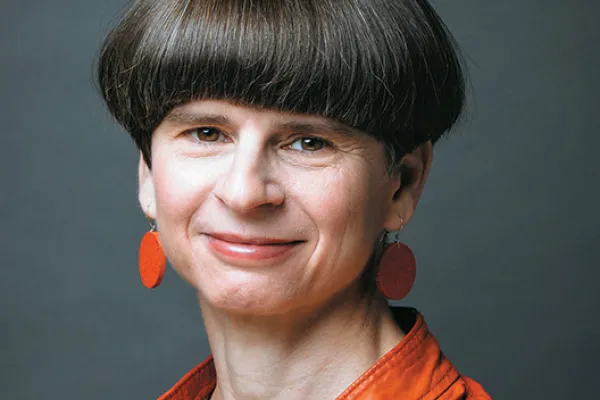Adapting to Change: Elizabeth Merritt Speaks on the Future of Museums, Collections
Events

Published December 8, 2015
Few people have a more comprehensive view of the future of museums and collections than Elizabeth Merritt.
Merritt will give a public lecture at Smith on “The Ten Thousand Year Collection” Thursday, Dec. 10, at 5 p.m. in Weinstein Auditorium, Wright Hall. Her talk is the keynote event of Part I of a “Futurisms” colloquium, a collaboration between the Kahn Liberal Arts Institute and the Smith College Museum of Art.
“Futurisms” will bring together scholars and museum professionals from Smith and the Five College consortium to explore challenges involved in creating, curating and archiving collections. Part II of the colloquium will be held February 25-27 and will include a talk by Anne Balsamo, dean of the School of Media Studies at the New School in New York City.
Here’s a preview of some of Merritt’s ideas about the future of museums and collections.
What are some key components of the museum of the future?
Elizabeth Merritt: “Remember that there are going to be ‘museums of the future’ very much like ones we have now. We have a handful of museums—the Mutter, Fairbanks Museum and Planetarium, the Wagner Free Institute among them—essentially unchanged from a century ago. That said, museums are going to continue to diversify and find new ways of being a museum. The shared challenge is going to be to make their resources —physical, digital, intellectual— accessible to as many people as possible.”
How would you prioritize the many issues affecting the future of museums and collections?
EM: “The first priority is winning over new audiences. As documented in many research studies, museums are losing ground. Attendance is shrinking when it ought to reflect the population growth of the United States. So the most important thing museums can do is to re-examine all their practices, identify what creates barriers to participation, and adopt new ways of engaging the public. That means becoming adept at fostering and facilitating conversations, rather than just teaching about what we know. It means providing opportunities for people to do stuff, as well as view stuff. And it means taking a long hard look at all the signals we send that tell non-museum goers, ‘This is not the leisure time you are looking for.’”
Why is it so important for museums, libraries and archives collections to change their approach?
EM: “I’m a biologist by training, so I am going to give you a biologist’s answer: museums and archives can adapt or die. Or maybe become remnant species—surviving in a very restricted niche. Museums’ organizational structures, economies, programs, collections: all evolved to fit an environment that is changing rapidly. We need to identify our core business—whether you consider that to be preserving collections, creating new knowledge, or helping people learn—and question everything we think we know about what it means to be a museum.”
How is new technology affecting the future of museums, libraries and archives?
EM: “Digital resources may just be the salvation of museums locked into inflexible architecture. Because mobile devices are so powerful and so ubiquitous, we can push our content out into the world without having to create the whole infrastructure needed to do so. Augmented reality and virtual reality platforms are becoming much more sophisticated—the perfect showcase for art, history and science. And digital resources are fueling a whole new economy, one in which museums can be a major source of raw material for makers, crafters and entrepreneurs.”
How is the curating work of museums and archives changing with changing technology?
EM: “A lot of industries that relied on a central, authoritative point of control have been tremendously disrupted by the power of the Web to directly link users with resources. Think about how AirBnB is challenging hotels, or how Uber and Lyft are eating the taxi business. I hope this power revolutionizes museum curation as well. For too long, museums have largely reflected the attitudes, interests and worldview of the dominant culture. Now audiences can connect directly with artists, historians, social activists and scientists via social media. Museums can take advantage of these new connections, and become valued aggregators, recommendation engines and moderators. Or they can try to continue to be authoritative arbiters of what is beautiful, true and important, and get cut out of the loop.”
What advice might you offer to Smith as we embark on a major re-imagining of our main library?
EM: “Re-examine every assumption you have about what a library is: What is essential, and what is merely tradition? Start with a long, thoughtful inventory of user needs, and design the new library around those needs. Spend some time exploring the most innovative library practices around the world. De Nieuwe Bibliotheek in the Netherlands, for example, organized their space around user profiles rather than traditional divisions of fiction/non-fiction and subject. And they trained their staff in marketing techniques. Buildings can last a long time—give some thought to “future proofing” the project by making the building as flexible as possible. Students in 50 years will be using technologies we can only dream of now. But with some thought, you can create a building and a program resilient enough to adapt to their needs.”